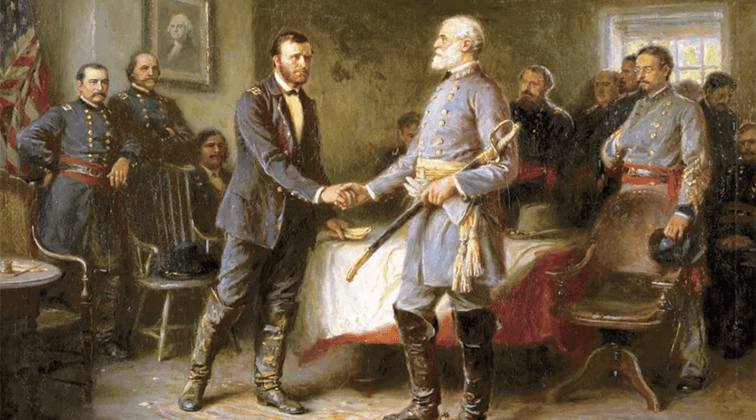Patriarchal Culture

In the nineteen fifties, Lawrence Kohlberg produced a theory of moral development. The three main levels are pre-conventional, conventional and post-conventional. In nineteen eighty-two, Carol Gilligan published In a Different Voice that claimed to add a more feminine perspective to Kohlberg’s theories. Gilligan noted that all the subjects in Kohlberg’s scientific studies were boys. Gilligan wondered what would happen if girls were included.

There are some problems with Gilligan’s research. It seems likely that she never conducted any research. She has been asked to produce the data upon which she based her conclusions but Gilligan refused on the basis of privacy. The requester replied that she would be quite happy to have all the names redacted if in fact there were any names or any details that could lead to identifying the research subjects, but Gilligan declined. So, we have no evidence that any studies were actually conducted.
That being said, Gilligan’s claims have some plausibility. Gilligan contends that little boys tend to favor abstract rules of justice and fairness and imagine that morality can best be served by having one rule that applies to all. The example given is of boys playing baseball. Three strikes and the player is out. This is just and fair because the same rules apply to each participant with no favoritism. However, sometimes a participant might cry and be particularly inept. When girls were playing, they were more likely to want to make an exception. They felt sorry for the lame duck. Gilligan contends that the girls tended to favor empathy and compassion over impartial abstract rules. Girls’ moral development would tend to go from selfish, then empathetic within the group, to compassion for all in general.

Another interpretation is that the boys are being “conventional,” concrete operational rule-followers while the girls could either be described as preferring compassion to justice or as “post-conventional.” “Post-conventional” is a level achieved when someone knows the rules but also breaks the rules as the situation demands. One can improvise an appropriate response to the particularities of the situation. This could be compared to a martial artist who knows a set routine of kicks, punches and blocks, but abandons these formulas when street fighting.
For some reason Gilligan has been considered a feminist. However, this kind of reason/emotion dichotomy fits perfectly within conventional or traditional thought. The scenario she describes seems in line with experience and not some kind of “second reality” fantasy.
One could consider these male and female points of view to be either justice on the one hand and mercy on the other, or justice made more perfect by allowing exceptions – the post-conventional level. In the United States, jury nullification occurs when the jury agrees that according to the letter of the law a defendant is guilty, or one of two parties should honor a contract in a civil suit, but that a strict application of the law in this case would be unjust. One example could be of an elderly person who has signed a contract for house repair but the price charged is grossly inflated to the point that the contractor could be considered a confidence man.
The relationship between these male and female perspectives as described by Gilligan has to be one of a rule and an exception. A contract signed between two parties is just a formalized promise with explicit penalties for breaking that promise. Rules and promise-keeping make the world more predictable and allows a modern economy to function. Credit gets extended on the understanding that debtor will pay back his loans. A builder borrows from the building supply store, the home owner from the bank, the builder trusts the home owner to pay his fees; almost nothing could get done if there was no trust and the chances of repayment were unknown.
If the exception were to become the rule, mortgages, credit and loans would cease and if they did continue some ungodly interest rate would have to be charged.
Culture involves, among other things, rules, ideals and expectations about how we treat each other. If exceptions became the rule, then there would be total chaos and unpredictability would be the norm.
When training an animal or small child, the pet owner or parent must establish himself as an authority figure and/or leader of the pack. Rules are established about what is permitted and what is not. As Cesar Millan from The Dog Whisperer says, structure first, love and affection second. Some dog owners apparently want to be nothing but affectionate with no discipline. The dog then rules the roost and terrorizes the family. Millan’s recommendation is that affection is only shown when the dog is doing what the owner wants it to do. If the dog is trying to rip someone’s throat out and it gets smothered in kisses and is petted, the antisocial behavior is reinforced. Not having any rules in fact makes pets and children uncomfortable. They do not know what is permitted and what is not. Their lives become unpredictable which is not consistent with a relaxed demeanor.

Once the dog, or child, is exhibiting the wanted behavior, then feel free to be affectionate.
René Girard, in The Scapegoat, describes the way scapegoating is used to establish order in situations of social chaos caused, for instance, by war, famine and runaway mimetic violence. Society relies on structure, hierarchy and order. In a chaotic situation instead of structure there is a state of “undifferentiation.” The rules are nowhere to be seen and confusion reigns. Examples of undifferentiation would be the elimination of distinctions between gods and man, men and women, parents and children, teachers and pupils, animals and humans, rulers and the governed, employer and employee. In certain myths, women give birth to puppies or other animals. With these distinctions eliminated incest and bestiality arises, the child attempts to supplant the parent, the student “educates” the teacher (I learn so much from my students) and men imagine that they have the qualities of a god. Everyone is potentially in competition with everyone else as each becomes the other’s rival. Hierarchies suppress rivalry.
“No matter what circumstances trigger great collective persecutions, the experience of those who live through them is the same. The strongest impression is without question an extreme loss of social order evidenced by the disappearance of the rules and “differences” that define cultural divisions. Descriptions of these events are all alike. Some of them, especially descriptions of the plague, are found in our greatest writers. We read them in Thucydides and Sophocles, in Lucretius, Boccaccio, Shakespeare, Defoe, Thomas Mann, Antonin Artaud, and many others.
Some of them are also written by individuals with no literary pretensions, and there is never any great difference. We should not be surprised since all the sources speak endlessly of the absence of difference, the lack of cultural differentiation, and the confusion that results.” (René Girard, The Scapegoat, pp. 12-13)
Structure first, affection second. Arguably, both involve love. Truly caring about a child or pet, means providing a structured environment with clear differences. A parent is not a child’s friend. To express it in a paradoxical fashion, if parents are truly their child’s friend, they will not try to be his or her friend, but the child’s parent. Children need parents and if the latter relinquish their responsibilities, then someone else would need to take over. The “structure” producing love is a kind of tough love that puts the interests of the child and pet first and places the parent’s desire to be liked a distant second.
Following somewhat traditional divisions, Ken Wilber distinguishes between Eros and Agape. Eros is the more masculine flavored love of the many for the One. Eros is related to the search for wisdom, development, salvation and God. Agape is the more feminine style of unconditional love; the love of the One for the many; the higher for the lower. Differences are largely ignored. The mother loves all her children equally despite their different accomplishments and abilities.

Unconditional love does not recognize differences of rank. In the world of the Relative, Eros and Agape must be combined with a drive to grow and develop and a level of self-acceptance. Without this level of self-acceptance and forgiveness, “loving your neighbor as yourself” is violated. Without love of self, nonpathological love of your neighbor will not be possible.
If culture represents some common agreement about what is desirable, how a person should live and how people should treat each other, then culture is a male invention involving rules and structure. At the very least, it is sustained by the masculine genius. On the other hand, women give birth to the individuals in this culture. They love and nurture them and help bring them into adulthood. Fathers and mothers provide structure and stability, love and support. Both are needed.
Individual men and women may in fact embody Eros and Agape to differing degrees and are capable of both. Nonetheless, men are likely to be particularly skilled at Eros, women at Agape; having different tendencies in their expression of love.
In the nineteen sixties, Betty Friedan said that if women wanted to enter the workplace, they must emphasize their ability to be strong, capable and independent; not weak victims in need of protecting. Friedan was not listened to and women did indeed claim victim status and appealed for help from men. Men came to the rescue, following their traditional role as savior and protector. When the women claimed that it was from the oppression of men that they needed protecting, many men turned their attack on maleness and masculinity. In some areas of life, particularly in education, the male presence was largely withdrawn. In the nineteen nineties, men were frequently depicted as pedophiles and rapists, or potential pedophiles and rapists.

Conservatives and traditionalists continued to try to preserve a more masculine perspective. But in high schools and colleges, the smothering feminine has arguably become dominant; an aggressive tendency to feel pity for the underperforming and weak. The unprepared student must be nurtured. Standards must be lowered so that almost no one need feel inadequate. Grade inflation, medals just for showing up and Valentine’s Day cards for all followed. Cries of “good job” on the soccer field when patently a good job was not being done.
The liberal fascination with equality tends to a dissolution of rules and structure. In the nineteen sixties, students took over the colleges to some degree with sit-ins and the like. In some cases, universities were bullied into introducing various kinds of “studies.” Students made headway in subverting the authority of their elders and betters. Feminism is a product of liberalism and some feminists claim that the whole concept of masculine and feminine, men and women, are socially constructed falsehoods. Differences like these were to be suppressed and defined out of existence.
In the nineteen seventies, parenting took a turn towards dissolving the hierarchy between parents and children. The anti-authoritarian hippy perspective tended towards the so-called “me” generation with parents and children “doing their own thing.”
The leveling tendencies of the liberal is at war with structure and discipline. The hippies were parasitic on “square” culture. Many of the hippies in 1960s San Francisco were living on welfare provided by the solid citizens who continued to go to work. Many of the hippies were in fact the product of stable two parent families and had a modicum of benevolent, moderately well-behaved tendencies. The hippies tended to come from structured, stable families with a hierarchy between parents and children. According to some former hippies, it was when the drop-out children of failed families, basically street urchins, started turning up in San Francisco that many hippies moved out as the situation became very unstable and dangerous. Drug using became hardcore and the focus turned away from “artistic” exploration; experimental theater and the like.
When people like Gloria Steinem deplore the “patriarchy” they are rejecting the very culture that gave rise to them. Culture involves “inequality.” Arguably, it is not possible to replace patriarchal culture with something else. Mother love cannot be the basis of society. The free market requires competition and the possibility of failure. Mother love would produce communism and the benevolent attempt to be compassionate to all. But it also removes the incentive to improve and develop, to be independent and productive which is the more masculine Eros. Benevolence without tough love tends to reduce the wealth for all and the whole system collapses under its own weight.
Mother love is important. We would not exist without it. Nothing but competition and a push to develop is unremittingly harsh. The life of the Spartan is no life at all. Friendship was discouraged. No one was supposed to dine with those the Spartan found especially congenial. Male children were ripped from their mothers at seven and beaten and starved into the ideal soldier.
But, arguably, culture as structure and rules is a product of the masculine. The feminine gives the structure some tenderness and flexibility and can help take into account exceptions and concern for the lost lamb. But the feminine genius if it becomes too dominant dissolves structure into “equality” and retards development. Development means hierarchy. “Differences” establish order. Undifferentiation is the result of a social breakdown and confusion reigns. The notion of “obedience” with regard to child-raising comes to be seen as politically incorrect and old-fashioned.
“You’re not the boss of me” obviously leads to more conflict not less. Teachers cannot teach if there is not the concept of, for instance, good writing and poor writing; the grammatically correct and incorrect; if teachers are not supposed to make students aware of the teacher’s higher place in the social and educational hierarchy. The fact is that teachers are responsible for establishing structure, rules and discipline and then provide a kind of warmth and humanity within that context. Structure first; affection second.
Demonizing the male and the masculine tends to lead from the principle of equality of opportunity to the equality of result. Unmoderated, mother love leads to cultural relativism and moral relativism. One culture is as good as another. One moral perspective is equal to another. Mother loves all her children equally. These views imply moral nihilism and an absolutely unregulated anything goes regarding culture. Liberalism and the suppression of the male tend towards nihilism; death and destruction, often with the best of intentions.
Railing against the patriarchy is railing against structure and order. A structure and order that needs the feminine to humanize it and allow for exceptions, but a structure and order that must nonetheless come first before we start worrying about the lost lamb and making exceptions in the name of compassion.
Recently, Jordan Peterson has noted the dominance hierarchy among lobsters. The males fight for dominance and the females mate with the successful males. Likewise women as a group prefer dominant males who are socially successful. These men are good providers and protectors. Female chimpanzees mate indiscriminately, though the dominant males try to monopolize procreation. Human women are selective and have arguably contributed to the brain size increase in humans as males compete for female affection via social status.

The relevance of lobsters is that lobsters have existed for 600 million years – longer than trees have existed. Humans diverged evolutionarily from lobsters 300 million years ago. When male lobsters win, they puff themselves up and click their claws in celebration. When they lose, they deflate. However, when the losers are given human anti-depressants, they regain their drive to win and return to the competition. This means that the hormonal pathways for both species have remained remarkably similar. It also means the social hierarchy predates human culture and is not the result of human culture. Hierarchies are not human creations. Human hierarchies, however, can be relatively peacefully maintained through rules, ranks and culturally supported differentiations. A hierarchy based on pure physical strength would not be desirable. Even chimpanzees’ hierarchies are based on the leader making alliances, which means the leader must be moral and not tyrannical. If he does become tyrannical and is unable to make alliances, the lesser chimpanzees will gang up on him and tear him to shreds literally including biting off his genitalia. Human tyrants are similarly vulnerable to revolution. A stable hierarchy is a reasonably moral one.




